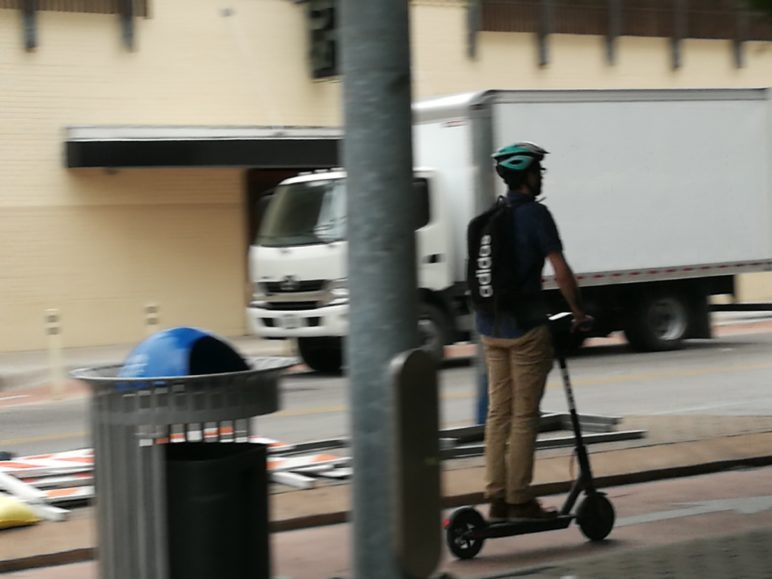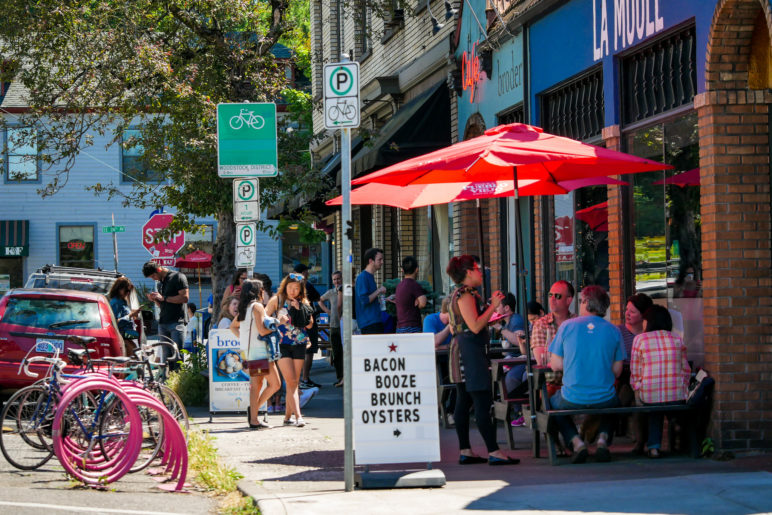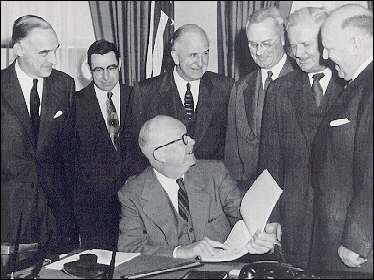Last week, Portland announced the terms by which it’d become the first city in the Northwest to license shared e-scooters, starting July 23.
If car-dependent cities are bad, and they are, then shared e-scooters are good.
You may have heard that private shared e-scooters—parked alongside the sidewalk by each successive user, waiting to be located and rented with the smartphone of the next—are the new hotness in the rapidly expanding universe of battery-powered “micromobility.” In the last 14 days, shared scooter fleets have launched in Dallas, Baltimore, Salt Lake City, Oakland, Milwaukee and San Antonio. Bird, the 11-month-old company behind all those launches, raised its latest $300 million two weeks ago in a deal that could potentially make it one of the fastest-growing companies in U.S. history. On Monday, Bird’s main competitor Lime locked up a $335 million round of its own.
More important, shared e-scooters have the potential to make mass transit more attractive by making walking faster. Much like shared bikes (and taxis), e-scooters chip away at the city-wrecking, planet-killing misapprehension that a private car is the best tool for every trip. And unlike Uber or Lyft, they don’t spend half of their miles on the road driving around without passengers.
Last week, Portland announced the terms by which it’d become the first city in the Northwest to license shared e-scooters, starting July 23.
To those watching closely, Portland’s usage fee was eye-popping: 25 cents per trip.
That’s a big slice of each rental. The going rate to ride an e-scooter is currently $1 per trip plus 15 cents per minute.
There are various regulatory terms, too. Notably, Portland is setting an overall cap of 2,500 e-scooters in the city, and requiring at least 20 percent to be deployed to lower-income East Portland.
The city says it never vetted its full plan with any potential applicant, so it may seem as if Portland is trying to block e-scooters while appearing to legalize them.
But look closely at the numbers, and another future suggests itself: One where e-scooters help finance not only their own long-term usefulness to Portlanders, but also the ongoing shift to a Portland that’s dramatically better for biking and walking, too.
The reason scooter companies are growing so fast is that they are wildly profitable

The first, crucial fact in this argument is that the new e-scooter business seems to be making a lot of money.
As Axios reported June 21, Lime (known in Seattle mostly for its other main service, dockless shared bicycles) has been claiming that “as of mid-April,” its scooters were averaging 9.3 trips per day. Daily revenue was $27, of which $9 (97 cents per ride) was operating profit.
“By the end of 2018, the company estimates its scooters will have a gross margin of $12.40 and with a payback period of only a month,” wrote Axios’s Kia Kokalitcheva.
Do those figures, cherrypicked to impress investors, pass a sniff test? And what happens to those margins if a fleet of e-scooters swells into the thousands, like Bird’s fleet in Los Angeles County now has?
Think of it this way: E-scooter companies are charging one-third the price of the “dockless” carsharing service ReachNow, except instead of purchasing, fueling and maintaining a fleet of BMWs, they’re doing it with a bunch of $493 electric scooters.
In other words, one of the main reasons shared e-scooters are a good business is the same reason scooters, bikes and skateboards have always made for efficient, equitable and ecologically sustainable urban transportation: They’re way, way cheaper than cars.
Is Lime fudging its numbers? Is it fooling itself? Either is possible. But raising hundreds of millions of dollars requires more than a few cherrypicked numbers. There is a reason investors are making e-scooter companies so big, so fast.
People are apparently willing to pay a couple bucks to move through a city quickly without worrying about a car.
Shared scooters create a legitimate and specific public need: Sidewalk space
The fact that e-scooters seem to be cash cows doesn’t mean we should tax them. It only means we have the option to tax them without driving them out of existence.
But in the case of e-scooters, there’s a perfectly good reason to tax them. It’s the other reason they’re so profitable: Shared e-scooters operate almost entirely in public space.
The public land of the city is their storefront, their sales floor and their billboard. It’s why their costs are so low.
And unlike shared bicycles, e-scooters are able to take advantage of something most U.S. cities have spent the last 150 years constructing: continuous networks of physically separated travel lanes.
I’m talking about sidewalks.
A city sidewalk is something an economist might call a common-pool resource: It’s mostly impossible to stop someone from using it, but when they do use it, the space they take up restricts everyone else’s ability to use it, at least a little.
If e-scooters become as popular as Lime predicts, they’re going to cause a lot of sidewalk problems—both as clutter, when they’re parked, and as a stressor, when a scooter zooms illegally past. (The e-scooters’ top speed of 15 mph seems unlikely on a sidewalk, but that’s how fast they can move.)
But Portland already knows how to solve sidewalk problems. The city faced the exact same issues about 15 years ago, when bicycle transportation rapidly and unexpectedly quadrupled.
The answer to the problems of the e-scooter revolution will be bicycle infrastructure

In 2004, Portland had a brilliant response to sidewalks suddenly cluttered by parked bikes. It was the bike corral: a curbside spot converted from one car space to 12 bicycle spaces, giving people a better place to park their bikes than the sidewalk. The city has since installed 149 such corrals, all of them at the request of nearby retailers.
As for people biking down sidewalks at 15 mph: Portland realized long ago that it could ban sidewalk biking downtown, but would never be able to hire enough police officers to reliably enforce it. The better alternative is to ingest a bit of wisdom from Portland Bicycle Planning Coordinator Roger Geller: someone biking on a sidewalk is only trying to ride in the protected bike lane that isn’t there.
Almost without fail, a protected bike lane reduces sidewalk bike counts by about 50 percent overnight. That’s a more powerful effect than any law enforcement agency could dream of.
It’ll be the same for e-scooters. The way to meaningfully cut sidewalk scootering won’t be to try to enforce the ban on it. It’ll be to build better places to scoot.
Under Oregon law, bike lanes are already e-scooter lanes, as surely as they’re e-bike lanes. And that’s appropriate—unlike, say, a Vespa or other large sit-down scooter, standing e-scooters from Bird or Lime have less mass than bicycles, so their riders have as much reason to ride courteously.
Yes, some people using e-scooters will behave badly in bike lanes. When this happens, my advice to bikers is to remember that e-scooters aren’t your enemy, and could be one of your best allies.
That’s because the path to safe, pleasant urban e-scootering is the same as the path to safe, pleasant urban bicycling: continuous networks of nice wide protected bike lanes.
Shared e-scooters could be a significant funding source for Portland’s protected bike lane network
OK, let’s add this up:
- The profitability of e-scooters makes it viable to tax them.
- The negative impacts of e-scooters demand a better low-stress bike lane network and more bike parking.
For Portland and other Northwest cities, the obvious solution is to tax them and spend the money on bike infrastructure. But how much money are we talking about?
For its four-month pilot, Portland is proposing to cap shared e-scooters at 2,500 citywide.
Michal Nakashimada, a writer and personal-mobility-tech project manager who covers the micromobility industry sympathetically, says e-scooter companies are currently able to deploy many more than that if they’re allowed. By his private calculation, Portland’s population could support “at least 4,000 scooters in the central city.”
Let’s imagine a Portland where two competitors each distribute 1,250 e-scooters around the city. And let’s say the scooters average only half the trips claimed by Lime in April: 4.6 per day.
Assuming the e-scooters were still a good investment despite that lower usage, they’d bring the city $1,049,375 in annual revenue—far more than the cost of administering such a program.
If the city had 4,000 scooters? That’d mean $1.7 million annually.
And what if average usage for each of those 4,000 scooters could rise to 7 trips per day—boosted, maybe, by increasingly scooter-and-bike-friendly infrastructure? That’d be $2.6 million, half the annual budget of Portland’s entire active transportation division.
We’re not talking about enough money to rapidly transform Portland’s streets. But if it were dedicated to bike-and-scooter lanes and parking racks, scooter fees could be a new, indefinite revenue source for active transportation on the scale of Portland’s 10-cent-per-gallon local gas tax.
So, the proposed 2,500 cap on scooters? Maybe it’s appropriate for a pilot. In the long run, it makes no sense to ration something we want more of. As for the distribution requirement to East Portland, that’s a fine requirement for a pilot. It would give the city the data required to weigh tradeoffs between ridership and coverage.
But a hefty public charge per scooter ride, dedicated to bike infrastructure? Bring it on.
Active transportation advocates in 2018 should take a lesson from driving advocates in 1954

There’s a major problem with the argument I’ve made here.
If Portland and other Pacific Northwest cities want to see less driving and more of everything else, shouldn’t all new transportation revenue come from taxes and fees on cars and driving?
After all, in our most conservative scenario, Portland is asking for $420 per year from each scooter—this in a city where registering an entire car costs just $56 per year and the average household spends about $400 a year on federal, state and local gas taxes.
In a perfect world, of course a driving tax would be better. If I could, I’d tax urban driving six ways to Sunday.
But this isn’t a perfect world. (Maybe you’ve noticed this recently.) And if forcing a particular mode of transportation to pay for some of the cost of its infrastructure were bad for that mode in the long run, the US auto industry would be bankrupt by now.
Of all the twists and turns that gave cars their current dominance in US cities, one of the most important was a compromise struck in 1954 among representatives of the auto, freight and road-building industries. It happened around a table called the Clay Committee, led by General Motors board member Lucius Clay. Members recommended funding the proposed Interstate Highway System not with general tax revenue but with a federal gas tax dedicated indefinitely to continued expansion of the freeway system.
Some driving advocates opposed the proposal, complaining that drivers shouldn’t bear the costs of a system they said would benefit everyone. But the gas tax eventually passed in 1956, and the Highway Trust Fund it created turned out to be the almost-unstoppable engine that financed freeways’ near-complete takeover of the nation’s transportation system.
Gas taxes didn’t kill driving. They were the political key to unprecedented growth in driving.
Gas taxes exist today because auto interests realized that when you evaluate a tax, you can’t just look at who is paying it—you also have to look at what the money is being spent on.
And that’s the final point I want to make here. Portland transportation spokesman John Brady wrote in an email Friday that money raised by Portland’s proposed scooter fees will go into a “new mobility fund” that can be used for “administration and enforcement; evaluation; safe travel infrastructure; and expanded and affordable access.”
If transportation reformers want to reduce auto dependence, they should support e-scooters. But that doesn’t mean fighting e-scooter taxes tooth and nail.
Instead, it means pushing for every city to create dedicated funds like Portland’s.


Comments are closed.